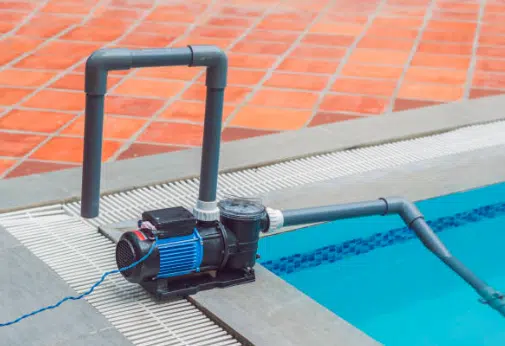- Fast Delivery Available!
- 211 Stirling Highway, Claremont, WA 6010
- 0412 561 620
- 0481 102 649
- Email Nicole
Choosing the right pool pump isn’t just about keeping your pool clean – it’s about finding the right balance between performance, energy efficiency and long-term savings. If you’re a pool owner in Western Australia, selecting the correct size and type of pump for your pool can save you money and headaches.
Your pool pump is the heart of your pool’s circulation system. It pushes water through the filter, heater and chlorinator, keeping everything in balance. Get it wrong, and you could end up with murky water, high power bills, or costly repairs.
Before anything else, calculate your pool’s volume. This will help you determine the flow rate required – that is, how many litres your pump needs to move per minute or hour.
To calculate:
Example: A 6m x 3m pool with a 1.5m average depth = 27,000 litres. Divide by 360, and you’ll need a pump that delivers at least 75 LPM.
Pool pumps come in a range of sizes. Oversized pumps waste electricity. Undersized pumps can strain your system and reduce water quality.
Here’s a quick guide:
Traditional single-speed pumps run at full power all the time, which is costly. Energy saving pool pumps, like variable speed models, allow you to adjust flow rate to suit your pool’s needs.
Benefits include:
If your pool has features like solar heating, waterfalls or in-floor cleaning, you may need a more powerful or programmable pump. Speak with a pool equipment expert to assess your full system requirements.
Make sure your chosen pump will physically fit in your setup. Check for:
Even if you’ve done the maths and read all the specs, it can still be tricky to choose the right pump. A quick consultation can help avoid costly mistakes, especially when you’re considering future upgrades or new pool features.
Choosing the right pump isn’t just about specs. At Best Price Pool Equipment, we offer personalised advice based on years of experience in the industry. Whether you’re replacing an old unit or installing a new pool, we help WA pool owners get it right the first time. Get in touch to get started

"*" indicates required fields
"*" indicates required fields